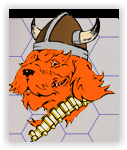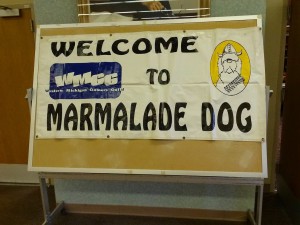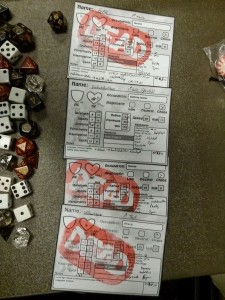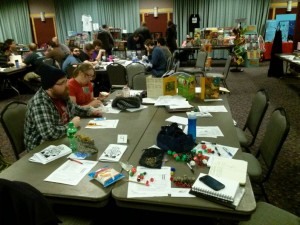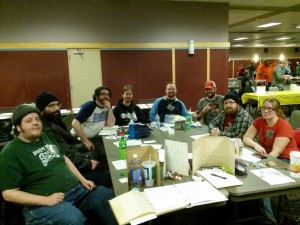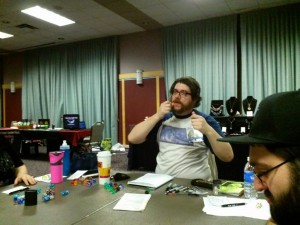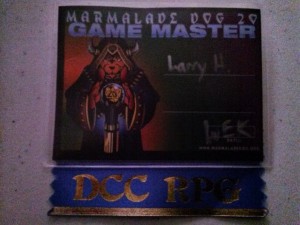E – Entrances & Exits – gates, sewers, streams, rivers, etc.
There are many ways into and out of a city besides the gates. Think like a thief or assassin, or an intelligent or hungry monster. How to get in or out without being noticed, or without consequences?
Any opening in the walls, or over or under the walls, is a potential entrance or exit.
Rivers, streams, harbors, aqueducts, sewers, hidden doors, sally ports, and so forth.
If there is a blind spot on the wall between towers that a thief can climb over, the thieves guild will know about it.
If there is a subterranean connection to the cisterns or sewers, the thieves guild would know about it – unless there is no current connection. Or it could have something nasty, so the thieves guild knows about it, but can’t use it. Perhaps the thieves guild could hire a party of newcomers to go after the whateveritis under the guise of a merchant having a problem. The gold paid to adventurers to avoid risking guild members’ necks would pay for itself, if the adventurers are successful, and it opens up a new smuggling route.
News stories in recent years about underground cities being found during renovations in different towns in Turkey, give an idea to the type of things that can be discovered in an area that has been inhabited for thousands of years. In RPG’s this has an interesting twist by having many fantasy or science fiction races and their different activities setting the stage for events and discoveries in the current era of the game. The well-known concept that the truth is stranger than fiction is a wonderful source of ideas for constructing and modifying your cities, and other aspects of your game world.
Be creative and determine connections that are only partly known. What if a well used smuggling route suddenly opens up to an unknown cave complex after an earthquake, and the route is blocked by something bad. Or what if the something bad is smart and strikes up an alliance with the smugglers/thieves guild?
Is there a magical device to allow or control entrance into or out of the city? That is, is magical entrance and egress from the city blocked or controlled to only allow those with the right device to do so?
Known and Unknown Entrances & Exits
- The city authorities can only control the things they know about, and have power to control.
- If they know about teleportation, it does not mean they have the means to block it.
- A forgotten portion of the sewer system may not have any bars or gates, or any form of patrol.
- Likewise, the thieves guild and other shadowy groups can only exploit the things they know about, and have the power or ability to exploit it.
- The leader of the thieves guild knows there is an excellent route into and out of the city, but there is a group of trolls down there, so they can’t use it.
- Bribes and threats to a guard’s family may be better than trying to be sneaky and avoid paying or risking a fight with the town guards.
Types of Entrances & Exits
- Gates
- Sewers/Drains
- Rivers/Creeks/Streams/Harbors
- Aquaducts
- Bridges (Why go on top of the bridge, when you can walk on the bottom?)
- Catacombs
- Caves/Caverns (Connecting to Sewers, Rivers, Catacombs, Dungeons, Cellars, etc.)
- Blind Spots between towers
- Hidden Doors/Sally Ports (Wealthy persons along the wall may have a clandestine method of passage unknown to the city authorities.)
- Air (Magical Flying Devices, Flying Creatures.)
- Magical Entrance (Spells like Teleport or Gate, Teleportation Rooms, or Devices for magical transit of space.)
Means To Control Entrances & Exits
- Guards
- Tolls
- Rules/Laws Governing Entrance
- Mundane: Signs/Doors/Gates/Bars/Moats/Drawbridges/Portcullises/Murder Holes/Arrow Slits/Barricades/Pavises/Pits/Cauldrons/Mantlets/Etc.
- Magical: Continual Light, Detection Spells, Glyphs of Warding, Protection Spells, and Special Devices to block teleportation, for example.
- Patrols: Regular or Staggered Intervals. Irregular and infrequent patrols may be the same as non-existent if they are only once or twice a year.
- The frequency of patrols is something the thieves’ guild will know well. The neighborhoods of the rich and powerful will usually have more frequent and larger patrols than the less well-to-do areas of the city. Areas where there has been recent trouble may have a show of force with large and frequent patrols until things go back to “normal”.
- Other
Make a list of how normal and illicit access to the city occurs. If you have a map, note it on the map, or have a “cheat sheet” to remind you of these things.







